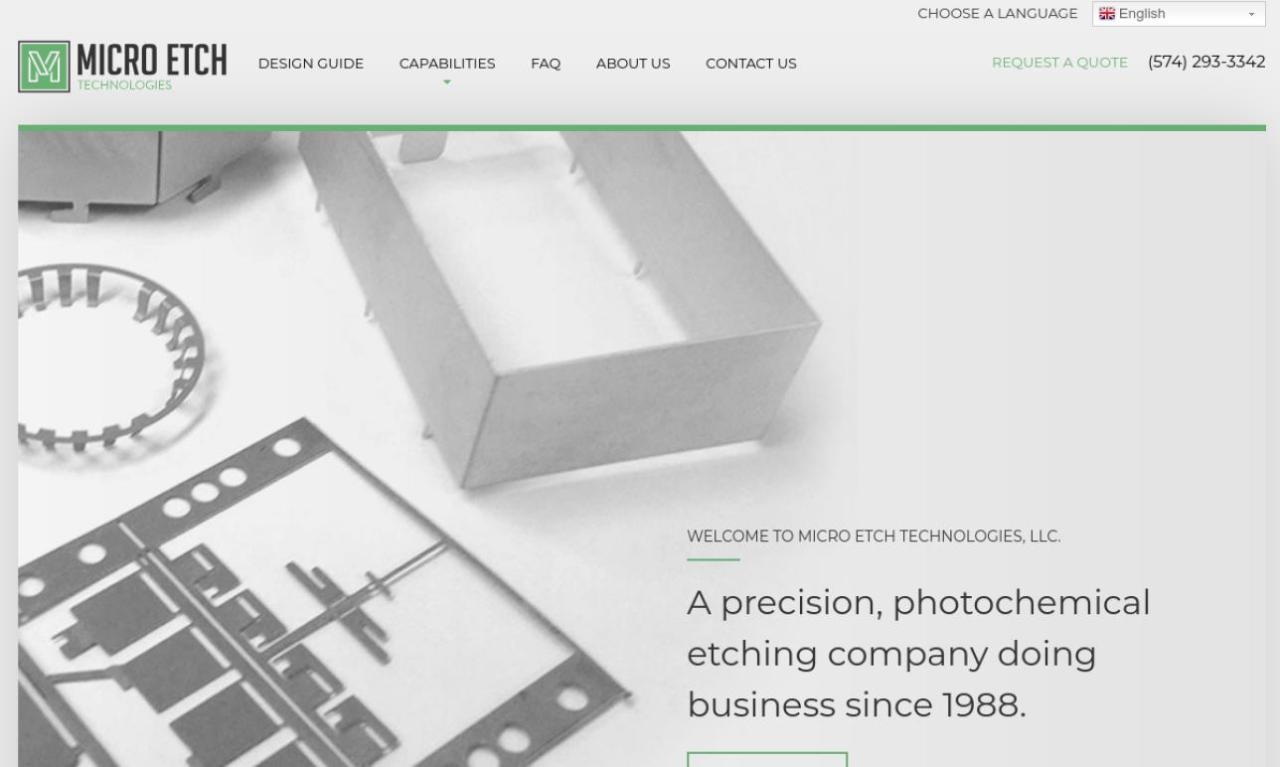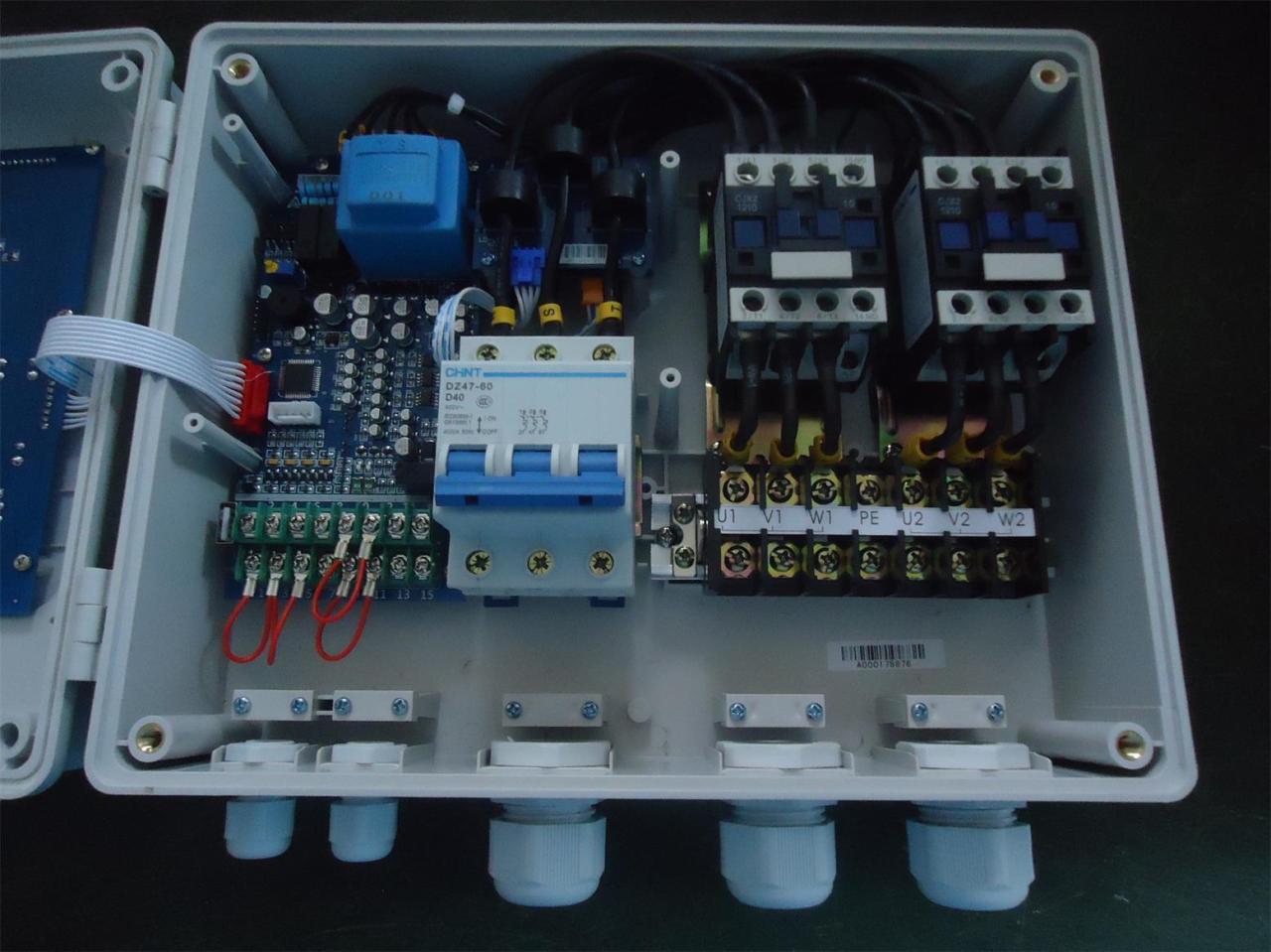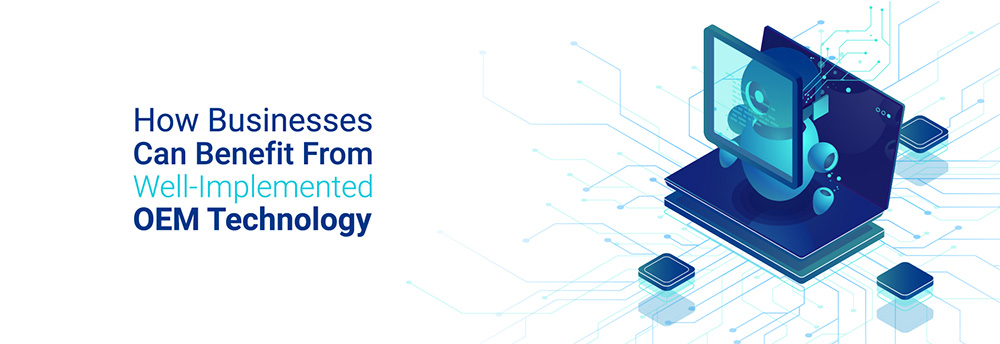Micro Etch Technologies: Shaping the Future of Tiny Devices
Micro etch technologies, the art of sculpting materials at the microscopic level, have become a cornerstone of modern innovation. From the intricate circuits in our smartphones to the minuscule sensors […]

Micro etch technologies, the art of sculpting materials at the microscopic level, have become a cornerstone of modern innovation. From the intricate circuits in our smartphones to the minuscule sensors in medical devices, these technologies are shaping a world where the small holds immense power.
The history of micro etch technologies is intertwined with the evolution of electronics and materials science. Early techniques, such as wet etching, involved immersing materials in chemical solutions to remove specific layers. However, as the demand for smaller and more complex devices grew, dry etching methods emerged, utilizing plasma or ion beams to precisely carve intricate patterns into materials. These advancements paved the way for the development of microelectronics, photonics, and microelectromechanical systems (MEMS), revolutionizing various industries.
Introduction to Micro Etch Technologies
Micro etch technologies are a group of techniques used to create intricate patterns and structures on the surface of materials, typically at the microscale. They are crucial for a wide range of industries, including electronics, photonics, and biotechnology. The ability to precisely control the shape and size of these features has led to the development of many innovative devices and products, such as microchips, solar cells, and medical implants.
Micro etch technologies have evolved significantly over the past few decades, driven by the ever-increasing demand for smaller, faster, and more efficient devices. The development of new materials, processes, and equipment has enabled the creation of features with ever-increasing precision and complexity.
Different Micro Etch Technologies
The choice of micro etch technology depends on the specific application and the desired features. Here are some of the most common types of micro etch technologies:
- Wet etching involves using a chemical solution to selectively remove material from a substrate. This technique is relatively simple and inexpensive, but it can be difficult to achieve high precision and uniformity.
- Dry etching, on the other hand, uses a plasma to remove material from the substrate. Plasma etching offers higher precision and control over the etching process, making it suitable for creating complex features.
- Plasma etching is a versatile dry etching technique that uses a plasma to remove material from the substrate. Plasma etching can be used to create a wide range of features, including trenches, holes, and patterns.
Wet etching is a common technique used in the fabrication of microchips, where it is used to remove unwanted material from the silicon wafer.
Principles of Micro Etch Technologies
Micro etch technologies are essential for creating intricate microstructures in various materials, enabling advancements in diverse fields like electronics, medicine, and energy. Understanding the fundamental principles behind these technologies is crucial for optimizing etch processes and achieving desired outcomes.
Chemical and Physical Processes
Micro etch processes rely on both chemical and physical mechanisms to remove material selectively.
- Chemical Etching: This method involves using chemical reactions to dissolve the material. The etching rate is determined by the reactivity of the etchant with the material, temperature, and concentration of the etchant.
- Physical Etching: This method involves using physical forces to remove material, such as ion bombardment in plasma etching or mechanical abrasion in dry etching. The etching rate is determined by the energy and flux of the bombarding particles or the applied force.
Etch Rate, Selectivity, and Anisotropy
Several key parameters influence the effectiveness and precision of micro etch processes.
- Etch Rate: The etch rate refers to the speed at which material is removed during etching. A higher etch rate can lead to faster processing times but may compromise feature definition.
- Selectivity: Selectivity describes the ability to etch one material preferentially over another. This is crucial in microfabrication, where different materials are often used to create complex structures.
- Anisotropy: Anisotropy refers to the directionality of the etching process. A highly anisotropic etch results in vertical sidewalls, while an isotropic etch produces rounded features. The choice of etch process and parameters determines the desired level of anisotropy.
Applications of Micro Etch Technologies
Micro etch technologies have revolutionized various industries, enabling the creation of intricate and highly functional devices and components at the microscale. These technologies have found widespread applications in fields such as microelectronics, photonics, microelectromechanical systems (MEMS), and beyond.
Microelectronics
Micro etch technologies play a crucial role in the fabrication of microelectronic devices, including integrated circuits (ICs) and semiconductors. The process involves etching away specific areas of a semiconductor wafer to create patterns for transistors, resistors, capacitors, and other components.
Micro etch technologies enable the creation of smaller, faster, and more efficient microelectronic devices, leading to advancements in computing power and data storage.
- Photolithography: This technique utilizes a photoresist material to selectively expose and etch specific areas of a semiconductor wafer, allowing for the creation of intricate patterns for microelectronic components.
- Dry Etching: This method utilizes reactive ions or gases to etch materials, offering high precision and anisotropic etching profiles. Dry etching is widely used in the fabrication of advanced ICs and memory devices.
- Wet Etching: This technique involves using chemical solutions to etch materials, providing a cost-effective and versatile approach for creating various microelectronic components.
Photonics
Micro etch technologies are essential in the development of photonic devices, which manipulate light at the microscale. These technologies enable the fabrication of optical fibers, waveguides, and other components for applications in telecommunications, sensing, and imaging.
Micro etch technologies have enabled the development of high-performance photonic devices, leading to advancements in data transmission speeds and optical sensing capabilities.
- Optical Waveguides: Micro etch technologies are used to create intricate patterns in materials like glass or silicon to guide light waves. These waveguides are essential components in optical communication systems, allowing for efficient transmission of data over long distances.
- Diffractive Optical Elements (DOEs): Micro etch technologies are employed to fabricate DOEs, which manipulate the phase and direction of light waves. These elements are used in various applications, including optical data storage, holography, and laser beam shaping.
- Photonic Crystals: Micro etch technologies allow for the fabrication of photonic crystals, which are periodic structures that control the propagation of light. These crystals are used in applications such as optical filters, sensors, and light-emitting diodes (LEDs).
Microelectromechanical Systems (MEMS)
Micro etch technologies are critical in the fabrication of MEMS devices, which combine electrical and mechanical components at the microscale. These devices have applications in various fields, including automotive, aerospace, healthcare, and consumer electronics.
Micro etch technologies enable the creation of miniature sensors, actuators, and other MEMS components, leading to advancements in automation, precision control, and medical diagnostics.
- Microfluidic Devices: Micro etch technologies are used to create microfluidic channels and chambers for manipulating and analyzing fluids at the microscale. These devices are used in applications such as drug delivery, lab-on-a-chip systems, and environmental monitoring.
- Accelerometers: Micro etch technologies enable the fabrication of accelerometers, which measure acceleration and are used in various applications, including smartphones, automotive safety systems, and industrial control systems.
- Pressure Sensors: Micro etch technologies are used to create pressure sensors, which measure pressure and are employed in applications such as automotive tire pressure monitoring, medical devices, and industrial process control.
Types of Micro Etch Technologies

Micro-etch technologies are essential in microelectronics, microfluidics, and other fields, enabling the creation of intricate patterns and structures on a microscopic scale. Different etching techniques offer unique advantages and disadvantages, making them suitable for specific applications. This section delves into the primary categories of micro-etch technologies: wet etching, dry etching, and plasma etching.
Wet Etching
Wet etching is a widely used technique that utilizes chemical solutions to remove material selectively. The process involves immersing the substrate in a chemical etchant that reacts with the material to be etched, leaving behind the desired pattern. The etching rate and selectivity depend on the chemical composition of the etchant, the substrate material, and the process parameters, such as temperature and agitation.
- Advantages: Wet etching is a relatively simple and inexpensive technique that can be performed at room temperature and atmospheric pressure. It is suitable for etching large areas and achieving high aspect ratios.
- Disadvantages: Wet etching can suffer from isotropic etching, which can lead to undercutting and poor feature definition. The process can also be difficult to control and may result in non-uniform etching.
- Applications: Wet etching is commonly used in the fabrication of silicon wafers, microfluidic devices, and solar cells. It is also used in the etching of metals, glass, and other materials.
Dry Etching
Dry etching utilizes a physical or chemical process to remove material without the use of liquid etchants. This technique offers greater control over the etching process and enables anisotropic etching, resulting in sharper features and higher aspect ratios.
- Advantages: Dry etching provides excellent control over the etching process, allowing for anisotropic etching and precise feature definition. It can achieve high aspect ratios and reduce undercutting.
- Disadvantages: Dry etching is generally more expensive than wet etching and requires specialized equipment. It can also damage the substrate material due to the high energy involved in the etching process.
- Applications: Dry etching is widely used in the fabrication of integrated circuits, microelectromechanical systems (MEMS), and optical devices. It is particularly suitable for etching materials with high aspect ratios and complex patterns.
Plasma Etching
Plasma etching is a dry etching technique that utilizes a plasma, a partially ionized gas, to remove material from the substrate. The plasma contains reactive ions and radicals that chemically react with the substrate material, leading to its removal. The etching process is highly controllable and can be tailored to achieve specific etching profiles and feature sizes.
- Advantages: Plasma etching offers high selectivity and anisotropy, allowing for precise feature definition and high aspect ratios. It is also a versatile technique that can be used to etch various materials.
- Disadvantages: Plasma etching can be a complex process that requires specialized equipment and careful process control. It can also damage the substrate material due to the high energy involved in the etching process.
- Applications: Plasma etching is widely used in the fabrication of microelectronic devices, MEMS, and optical devices. It is particularly suitable for etching materials with complex patterns and high aspect ratios.
Advanced Micro Etch Technologies
Micro-etching techniques have evolved significantly, leading to the development of advanced technologies that enable the fabrication of highly intricate and complex microstructures. These advanced techniques offer greater precision, control, and versatility, opening up new possibilities in various fields.
Deep Reactive Ion Etching (DRIE)
DRIE is a highly anisotropic etching technique that uses a combination of plasma chemistry and ion bombardment to create deep, vertical features with high aspect ratios. The process involves alternating cycles of etching and passivation steps. In the etching step, a reactive gas, such as SF6, is used to etch the material. In the passivation step, a fluorocarbon gas, such as C4F8, is used to deposit a thin, protective layer on the sidewalls of the etched features. This layer prevents the etching from proceeding laterally, resulting in highly vertical structures.
- High aspect ratio features: DRIE can achieve aspect ratios of up to 100:1 or higher, enabling the fabrication of deep, narrow trenches and holes. This capability is crucial for applications such as microfluidic devices, MEMS, and high-density data storage.
- High precision and control: DRIE offers excellent control over the etching depth and profile, allowing for the fabrication of complex three-dimensional structures with high accuracy. This precision is essential for the development of advanced microdevices with precise functionalities.
- Wide range of materials: DRIE can be used to etch a wide range of materials, including silicon, silicon dioxide, and various polymers. This versatility makes it suitable for a broad range of applications.
DRIE has found applications in various fields, including:
- Microfluidic devices: DRIE is used to create microchannels and chambers for microfluidic devices, enabling precise fluid manipulation and analysis. Examples include lab-on-a-chip devices for medical diagnostics and drug discovery.
- MEMS: DRIE is a key enabling technology for the fabrication of microelectromechanical systems (MEMS), which are miniaturized devices that combine electrical and mechanical components. Examples include accelerometers, gyroscopes, and micro-mirrors used in various applications.
- High-density data storage: DRIE is used to create high-density data storage devices, such as hard drives and flash memory chips. The ability to etch deep, narrow trenches allows for the storage of more data in a smaller space.
Challenges and Future Directions
Micro etch technologies, while offering immense potential for innovation, face a number of challenges that need to be addressed to realize their full potential. These challenges are interconnected and often require a multidisciplinary approach to overcome.
Precision and Control
Achieving high precision and control over the etching process is crucial for fabricating micro- and nanoscale devices with desired geometries and functionalities. This challenge arises from the inherent limitations of conventional etching techniques and the increasing complexity of micro- and nanostructures.
- Etch Depth Control: Precisely controlling the depth of etched features is essential for creating devices with the correct dimensions and performance. This requires accurate control over etch parameters such as etch time, power, and chemical concentration.
- Etch Profile Control: Ensuring that the etched features have the desired shape and uniformity is another critical challenge. This requires careful optimization of etch parameters and the use of advanced techniques like anisotropic etching, which favors etching in specific directions.
- Etch Uniformity: Achieving uniform etching across large areas is crucial for high-throughput manufacturing. This can be challenging due to variations in etch rates and etch profiles across the substrate surface.
Material Damage, Micro etch technologies
Etching processes can induce damage to the materials being etched, leading to defects, surface roughness, and changes in material properties. This can compromise the performance and reliability of micro- and nanodevices.
- Surface Roughness: Etching can create surface roughness, which can affect device performance, particularly in applications requiring smooth surfaces, such as optical devices.
- Material Modification: The etching process can alter the chemical composition and physical properties of the material, leading to changes in conductivity, optical properties, or mechanical strength.
- Stress and Defects: Etching can induce stress in the material, which can lead to cracking or delamination, especially in thin films and delicate structures.
Future Directions
Research and development efforts are focused on addressing these challenges and pushing the boundaries of micro etch technologies. These efforts involve exploring new materials, developing advanced etching techniques, and optimizing existing processes.
- Advanced Etching Techniques: The development of novel etching techniques, such as plasma etching, ion beam etching, and atomic layer etching, offers greater precision, control, and reduced damage compared to traditional wet etching methods. These techniques allow for the fabrication of more complex and intricate structures with higher aspect ratios and finer features.
- New Materials and Processes: Research is underway to explore new materials and processes for micro- and nanofabrication, including the use of novel materials like 2D materials (graphene, MoS2) and advanced fabrication methods like direct laser writing and 3D printing. These advancements are paving the way for the development of next-generation micro- and nanodevices with enhanced functionalities and improved performance.
- Integration with Other Technologies: Micro etch technologies are increasingly being integrated with other technologies, such as nanotechnology, quantum computing, and microfluidics, to create novel devices and systems with advanced capabilities. For example, the integration of micro etch technologies with nanotechnology enables the fabrication of nanoscale devices with unique properties and functionalities, opening up new possibilities in fields like electronics, sensors, and energy harvesting.
End of Discussion
Micro etch technologies are not just a means to miniaturize devices; they are a driving force behind innovation. By enabling the creation of complex structures at the nanoscale, these technologies unlock new possibilities in fields like quantum computing, bioengineering, and energy harvesting. As research and development continue to push the boundaries of what’s possible, micro etch technologies will undoubtedly play a crucial role in shaping the future of science and technology.
Micro etch technologies are crucial for creating intricate designs on silicon wafers, enabling the development of advanced electronics. These technologies are also relevant to churches seeking to upgrade their audio-visual systems, which can be a significant expense. Fortunately, organizations like church technology grants provide funding for churches to acquire these systems, making it possible for them to enhance their services and connect with their congregations in new and innovative ways.
Micro etch technologies, in turn, are vital for the creation of the components used in these systems, showcasing their wide-ranging impact across diverse sectors.



